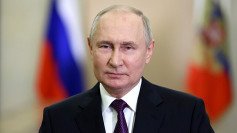Hong Kong could be a model for the entire world to follow in terms of its effective fight against the COVID-19 pandemic. For two weeks now, it reported zero cases of local transmission even with it starting to reopen its economy.
It would be recalled that Hong Kong was gradually reopening businesses in February but was hit by a second wave of infections. It then implemented tougher lockdown measures and has since emerged successfully.
To date, Hong Kong only recorded 15 new cases on April 20. Still, those cases are from people who came from abroad and contracted the infections from their place of travel. In total, since the outbreak happens, the region recorded 1,041 cases, 900 recoveries, and four deaths.
One significant move that prevented the full-blown rampage of COVID-19 in the region is that it closed borders and implemented social distancing as early as January. From that point on, people worked from home, businesses are temporarily shut down, non-essential establishments were suspended.
By the time the second wave hit, Hong Kong moved to ban all travel and only non-residents are allowed entry in the city. It even stopped visitors from making en route flights in the city's airport.
As for those residents arriving in Hong Kong, the government implemented tough quarantine measures. People asked to do strict home quarantines are required to wear electronic bracelets so the official can tract their activities. Everyone arriving in the city should also undergo tests to ensure that they are negative of the virus.
As for the activities within Hong Kong, the liquor ban is implemented in all bars, and gyms and other sports facilities were barred from opening. Dining establishments were only allowed to operate if they only welcome limited customers or if they were able to put up barriers between diners.
Of course, its success in fighting the outbreak does not come without impact to the local economy. And, as the city reopens to new normal, the world is observing if it can thrive fully.
For instance, the virus wrecked the cinema industry worldwide. However, after emerging from two weeks of no local transmission, Hong Kong is set to reopen its movie theaters. Cinemas in the city will begin showing films on Friday. It remains to be seen if people will brave out leisure activities again and pump at least a few money into the industry or prefer statuing at home up until vaccines are approved.
Asia recorded 250,372 of total COVID-19 cases and only accounted for 7% of the overall number of cases worldwide. The big bulk of infections were reported in Singapore, Pakistan, and India as of late while China, South Korea and Japan have slowed down the rate of transmission. By comparison, Europe accounted for 40% and North America 34%.
Here are the numbers in different Asian countries according to data from the World Health Organization as of May 5:
China (total number of cases 84404) - (new cases 4) - (total deaths 4643) - (new deaths 0)
Singapore 18778 - 573 - 18 - 0
Japan 15231 - 174 - 521 - 11
Republic of Korea 10804 - 3 - 254 - 2
Philippines 9485 - 262 - 623 - 16
Australia 6825 - 24 - 95 - 0
Malaysia 6353 - 55 - 105 - 0
New Zealand 1137 - 0 - 20 - 0
Vietnam 271 - 0 - 0 - 0
Brunei Darussalam 138 - 0 - 1 - 0
Cambodia 122 - 0 - 0 - 0
Mongolia 40 - 1 - 0 - 0
Lao People's Democratic Republic 19 - 0 - 0 - 0
Fiji 18 - 0 - 0 - 0
Papua New Guinea 8 - 0 - 0 - 0






